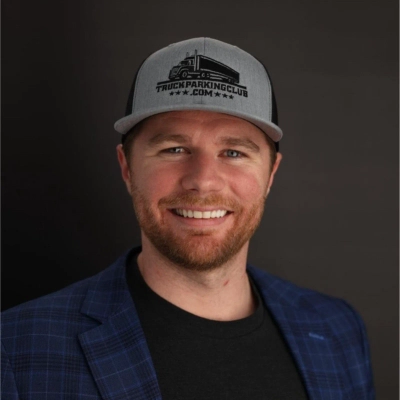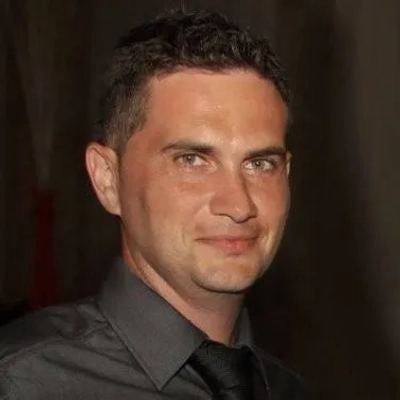How to Overcome Significant Technical Challenges in Architectural Projects
Technical challenges in architecture require innovative solutions, as demonstrated by the 14 case studies examined in this article. Leading professionals share their strategies for overcoming obstacles ranging from image compression to real-time data verification. These insights from industry experts provide practical approaches to complex architectural problems while maintaining quality and performance.
Compressing Images While Preserving Quality
When we were building the image upload tool for pest identification on What Kind of Bug Is This, the biggest technical headache was keeping file sizes small without ruining image quality. People were uploading huge photos straight from their phones, which slowed everything down and broke the flow.
We solved the issue by adding a compression step immediately after upload and setting strict but reasonable file size limits. But the real fix came from better UX — we added a prompt that said, "A clear photo under 5MB works best," which nudged users to trim photos before uploading. It cut our error rate in half and kept the tool snappy. Sometimes the solution isn't just technical — it's how you guide people through it.
Building Custom ETL Pipeline for Migration
During a cloud migration project for a client, we encountered a significant challenge when we discovered their legacy database contained hard-coded fields with incompatible date formats and character sets that compromised data integrity. To address this issue, our team developed a custom ETL pipeline that standardized and cleansed the data before completing the migration to AWS. This solution not only resolved the immediate problem but also highlighted the importance of conducting low-volume test migrations early in the process to identify potential issues in legacy systems.

Overcoming Data Bias in Medical AI
During the development of an AI-powered health diagnostic tool, my team and I faced a major technical roadblock related to data bias. Our model could identify diseases from medical images, but we discovered its accuracy dropped for patients with darker skin tones. The issue stemmed from our dataset, which lacked diversity because it came mostly from a few institutions. It was a serious concern for a system intended for medical use, where fairness and precision are non-negotiable.
We approached the challenge with a three-part plan focusing on data quality, fairness, and transparency. We expanded our dataset by forming partnerships with international hospitals to gather a broader range of medical images while following privacy laws like GDPR and HIPAA. To fill remaining gaps, we created synthetic images using generative AI, which helped balance representation. We also embedded fairness metrics into our training pipeline and used bias mitigation algorithms, such as re-weighting and adversarial debiasing, to improve accuracy across demographics.
The results were clear. The updated model performed consistently across all patient groups and became easier for medical professionals to trust. Using explainable AI tools like SHAP and LIME, we could show exactly how the model made its decisions. It not only improved diagnostic reliability but also set a new ethical standard in our organization for developing AI responsibly. My advice to any team tackling similar issues is to treat data diversity and transparency as core design principles—not as afterthoughts.

Prioritizing User Feedback Throughout Development
During a major ecommerce platform development project, our team faced the significant challenge of building a comprehensive solution that met our client's expanding vision while ensuring actual user needs were addressed. We initially approached this by focusing on meticulously implementing all requested features and creating what we believed would be an impressive technical achievement. However, we learned that developing in isolation without regular user validation resulted in a product that, despite its technical merits, missed critical usability requirements. This experience fundamentally changed our development approach to prioritize incremental releases with continuous user feedback throughout the entire project lifecycle.
Creating Real-Time Content Synchronization Across Networks
One of the biggest technical challenges I faced at AIScreen was building a real-time content synchronization system for our digital signage network. I needed every screen across multiple time zones to update instantly—no lag, no manual refresh. The complexity came from managing big data and inconsistent internet in client locations.
I broke the problem down into smaller pieces. First I worked with our engineers to implement edge caching, so local devices could store and deliver content when the internet dropped. Then I added AI-based predictive syncing, which preloads likely to be used assets based on time, audience and weather.
The solution was a game changer—sync delays went from minutes to milliseconds. That project taught me a valuable lesson: technical challenges aren't roadblocks, they're opportunities to innovate. By thinking modular and using automation I created a system that's now one of our platform's biggest differentiators.

Developing AI-Based Data Recovery Algorithm
The most significant technical challenge I've faced in data recovery was addressing the vast variability in file corruption patterns. Every damaged file presents unique characteristics, and developing a solution that could maximize data recovery across all these different scenarios seemed nearly impossible at first.
My approach leveraged my background in artificial intelligence. I designed an AI-based data recovery algorithm that could intelligently adapt to different corruption patterns and achieve maximum recovery rates regardless of the specific damage scenario. Rather than relying on static, rule-based recovery methods, this AI system could analyze the corruption signature and dynamically adjust its recovery strategy.
I first implemented this algorithm in Advanced Outlook Express Repair, where it achieved the industry's highest data recovery rate. The success validated my approach—by teaching the system to recognize patterns and optimize recovery paths, we could handle the unpredictability that had always plagued data recovery efforts.
Since then, I've integrated this AI-driven algorithm into all our new product development at DataNumen. This consistent application of adaptive intelligence has allowed our data recovery software to maintain the highest recovery rates in the industry across our entire product line. The key insight was recognizing that data recovery isn't just a technical problem—it's a pattern recognition challenge that AI is uniquely suited to solve.

Transforming Field Data Collection With Teams
Our biggest technical challenge we tackled was improving how our technicians tracked and shared data from the field. We used to rely on handwritten service notes that were entered later at the office, which caused delays, missing details, and frustrated customers. We knew we needed a better system, but didn't want to disrupt the workflow our team was used to.
Instead of jumping straight into a new app, we started by mapping out the exact pain points with the techs themselves. Together, we designed a digital form they could fill out right from their phones—even offline in remote areas. Once it synced automatically with our office system, everything clicked. Reports became clearer, follow-ups faster, and customers started noticing the improvement. It taught me that solving a technical problem starts with listening to the people closest to it—not just finding new software.

Parallel Testing Ensures Flawless HR Transition
At Walmart, I led a complex technology transformation of our HR Information Systems affecting 1.8 million employees where the risk of payroll errors posed a significant challenge. To address this, I implemented a parallel run strategy where we processed payroll simultaneously in both legacy and new systems across multiple pay periods, allowing us to validate every calculation and integration in real-time. We also created a comprehensive sandbox environment for HR teams and administrators to practice with the new system before full implementation. This methodical approach resulted in a flawless transition with zero payroll disruptions, maintaining the trust of our employees during a critical infrastructure change.

Converting Batch Processing to Event-Driven System
The team faced a difficult task when we needed to establish real-time inventory synchronization between multiple warehouses through a legacy ERP system. The system operated through nightly batch jobs and outdated stored procedures which resulted in delayed stock visibility and inconsistent inventory data.
The system transitioned from batch processing to an event-driven system through the implementation of an async .NET Core service and RabbitMQ. I collaborated with the team to identify essential update routes and developed methods for handling messages without duplication. The team replaced multiple slow SQL queries by implementing indexed views and restructured specific joins that led to deadlocks. The warehouse team eliminated manual reconciliation tasks after inventory sync latency decreased to seconds from its previous hours-long duration.

Solving Hidden Roof Leaks Through Thermal Tracking
Technical challenges on a roof are rarely about new technology; they're about finding the simple, old-school solution to a complex leak. The most significant technical challenge we faced was on an old church with a steep, intricate slate roof that had been leaking for years. Multiple contractors had failed to fix it, using a lot of corporate patches and chemicals that only made the problem worse.
The problem was that the leak wasn't coming from the slate itself; it was coming from the hidden copper flashing around the forty-foot spire. The old flashing had worn thin and was installed improperly fifty years ago, so every time the wind blew, water was being driven up underneath the slate in a complex pattern. No amount of caulk was going to fix a physics problem.
Our approach was not to look at the roof itself, but to look underneath. We went into the belfry and the attic with a thermal camera on a rainy day to trace the exact, complex path of the water. We learned that the previous contractors had failed because they were trying to solve the problem where the water appeared, not where it started.
The solution was not high-tech; it was hands-on and detailed. We completely removed the spire flashing, custom-fabricated a new, heavier-gauge copper flashing system in our shop, and installed it using soldered seams and proper overlap to handle the high wind and driven rain. It was tedious, demanding work that required a true craftsman.
The lesson is that a significant technical challenge requires you to strip away the assumptions and find the simple, foundational failure. The best way to overcome any problem is to be a person who is committed to a simple, hands-on solution that prioritizes the integrity of the hidden work over the speed of the visible work.
Combining Tech With Human Skills for Accuracy
One of the toughest technical challenges we faced wasn't software—it was nature. During a particularly humid Alabama summer, we discovered that our moisture sensors for termite prevention were producing inconsistent readings. The heat, soil conditions, and condensation were affecting data accuracy, which meant we couldn't always trust the alerts. It wasn't just inconvenient—it risked missing early signs of activity.
We ended up building our own workaround. Instead of relying solely on the sensors, we trained our team to pair the data with visual moisture mapping—using thermal cameras and field notes that fed back into the system. It evolved into a hybrid approach that proved more accurate than the technology alone. The lesson? Sometimes the "fix" isn't more automation—it's giving technology a human partner who can read between the numbers.

Redesigning Architecture for Real-Time Data Verification
A major technical challenge I faced was creating a reliable infrastructure that could process live location data accurately and efficiently. The system needed to manage thousands of updates daily, pulling from multiple external data sources. In the early stages, we dealt with data inconsistency, latency, and system downtime caused by fragmented inputs and limited visibility.
I approached the issue by first mapping out every point of data interaction. This revealed inefficiencies in how our system ingested, stored, and retrieved information. Working closely with the engineering team, we designed a new cloud-based architecture supported by automated verification layers. These systems cross-checked and cleaned data in real time, ensuring only verified information reached the user interface.
The result was a faster, more stable platform capable of handling growth without sacrificing reliability. It also laid the groundwork for future product features that relied heavily on accurate, up-to-date data. The experience reinforced the importance of structuring data workflows early, testing aggressively, and building for long-term scalability.

Swift Furnace Replacement During Winter Crisis
Absolutely, I'm happy to share a project that truly tested our team's expertise at ALP Heating. A few months ago, we were called to a residential property in Newmarket where the homeowners were experiencing severe heating issues during an unexpected cold snap. The furnace was an older model, and initial assessments indicated that a simple repair might not be sufficient to restore comfort.
Upon further inspection, we discovered that the furnace was not only inefficient but also posed potential safety risks due to outdated components. It was a significant challenge because the homeowners were understandably anxious about the safety of their family during the harsh winter conditions. Added to this was the concern of not having reliable heating until the issue could be resolved.
To tackle this, we first ensured open communication with the homeowners, explaining the risks and options available. We emphasized our commitment to safety and transparency - two core values at ALP Heating. I always believe that understanding the problem is half the solution, and our approach is to empower clients with information.
We proposed a full replacement of the furnace with a modern, energy-efficient model that would not only provide reliable heat but also significantly reduce their energy bills in the long run. The homeowners were initially hesitant due to the cost involved, but we showed them the potential savings through our ALPCare maintenance plan, which ensures regular checks and upkeep.
Once we received their approval, our team worked diligently, completing the installation within a day. Our technicians faced a few unexpected challenges during the installation, especially with modifying the ductwork to fit the new system. However, leveraging our extensive experience and training, we adapted on the spot, ensuring the adjustments were made without compromising safety or functionality.
In the end, we not only resolved the heating issue but also left the family with a system that enhanced their comfort and safety for years to come. They were thrilled with the outcome, and we felt proud to have turned a potentially stressful situation into a positive experience for them.
At ALP Heating, we understand that every project presents unique challenges, and it's our responsibility to navigate these with expertise and care. This commitment is what drives us to provide top-notch service and peace of mind to our clients across the Greater Toronto Area.

Bridging Operations and Marketing Through API
A lot of aspiring developers think that a technical challenge is a master of a single channel, like the code. But that's a huge mistake. A leader's job isn't to be a master of a single function. Their job is to be a master of the entire business.
The significant technical challenge was integrating our legacy inventory system (Operations) with our modern web platform (Marketing) to provide real-time stock status. This forced me to learn the language of operations. We stopped thinking about two separate systems and started treating them as one system with a broken communication link.
The approach was to get out of the "silo" of technical metrics. The solution was to build a simple, asynchronous API layer that translated the heavy duty system's operational data into a marketing-friendly format. This avoided a costly, unnecessary full system migration.
The collaboration led to a profound outcome. The new system allowed us to instantly confirm OEM Cummins Turbocharger availability, dramatically increasing online conversion rates. I learned that the best technology in the world is a failure if the operations team can't deliver on the promise. The best way to be a leader is to understand every part of the business.
My advice is to stop thinking of a technical challenge as a separate problem. You have to see it as a part of a larger, more complex system. The best leaders are the ones who can speak the language of operations and who can understand the entire business. That's a product that is positioned for success.





